Which tile to choose?
Before you acquire a facing material, it is worth considering several nuances:
- For an apron in the kitchen, semi-gloss tiles are better, since dirt and scratches are more noticeable on a glossy surface.
- The degree of moisture absorption should be labeled A or AA.
- The relief of products is often criticized: a textured surface, in contrast to a smooth one, is more difficult to care for.
- Before buying the finishing material, it is necessary to calculate the size of the apron and provide a margin in case of damage to the tiles during installation or operation.
- If the store did not find suitable products, it is worth looking into the department with flooring.
- The party, as well as the tone indicated on different packages, must match, otherwise the laid tiles will differ in shades.
Layout Options
There are several ways to make a ceramic apron from a ceramic tile. The easiest is traditional, joint to joint. Suitable for both square and rectangular products. Also, squares can be laid diagonally, corner to corner.
Another way is with offset. It looks more interesting, but requires cutting the material, and hence increasing costs.
On the photo corner kitchen with an apron from a rectangular "boar", laid in a direct way.
Much more layout options offer tile-boar. Products can be stacked vertically (directly or offset), which is important in apartments with a low ceiling: an elongated layout will visually lengthen the room.
Rectangular tiles can be laid with a Christmas tree (like parquet) and a ladder (with a slight displacement). It turns out an unusual pattern that attracts attention and acts as a decoration of the kitchen. The disadvantage of such methods is the need for trimming.
Pictured kitchen apron made of embossed tiles sand colorlaid vertically.
Hexagonal honeycombs and scales are glued over the work area in the traditional way.
Sizes and format of tiles
The modern market offers many types of tiled apron products. Their sizes differently affect the visual perception of the kitchen space.
Wild boar
A rectangular tile for a kitchen apron ranging in size from 7x12 cm to 10x25 cm. It has a bevel at the edges, which makes it voluminous. Another common name is the metro. Boar fits into any style - from Provence to hi-tech, and never goes out of style. It is successfully used in interior design to correct design flaws and room sizes.
Mosaic
Durable small tiles ranging in size from 1 to 5 cm. Resistant to dirt, temperature and high humidity. From the mosaic, you can make panels, combine with large products or lay out the apron completely. The range is rich not only in colors, but also in the materials from which the mosaic is made: glass and mirror, ceramics, natural and artificial stone, as well as metal.
Ceramic tile 10x10
A small square tile for the kitchen, decorating an apron in many interiors. Suitable for both spacious rooms and for small kitchens. Easy to install, has a huge selection of drawings and textures.
To make the apron look more interesting, you can combine tiles of two or three colors. Especially popular today patchwork style itemsreminiscent of patchwork. They blend perfectly with the plain facades of the kitchen.
Pictured is a Provence style kitchen. On the apron, white tiles measuring 10x10 cm alternate with patterned and blue inserts.
Large apron tile
Another suitable format is 15x15 cm, it is considered medium. Products of size 20x20, 20x30, 25x33 cm and larger are used less often. It’s best to choose unobtrusive shades and patterns, as well as grout in colorso as not to draw attention to the overall products.
In compact kitchens, a large wall tile does not look appropriate, as it divides the area above the countertop into large squares and rectangles, depriving the interior of harmony.
In the photo there is a spacious designer kitchen with a black matte apron made of plates measuring 20x30 cm.
Apron color
To begin with, it is worth determining whether the apron will be inconspicuous among the kitchen set or vice versa - stand out, speaking in a bright accent.
In the first case, it is important that the color is maintained using similar shades of kitchen furniture or interior details. Another trick is an apron in the color of walls or countertops. These methods connect the headset into a single whole.
In the photo, a vertically laid pink boar that stands out against a black and white background.
White tile is a classic that always remains in demand. This color is universal, besides it helps to hide the imperfections of the room and expands the space. The disadvantage of this choice is the darkening of the joints during operation, but to solve this problem it is enough to use a dark grout.
Another universal option is a gray apron, it combines with most shades. An apron made of black tiles is appropriate in a simple interior, it gives an atmosphere of solidity and mystery, and looks great as a contrast on a white background.
The photo shows a kitchen whose irregular shape is smoothed by a white ceramic apron.
Accent combinations can be very different: for example, sunny yellow or bright red on a white background, blue or blue on a neutral beige, green on a dark gray. The final result depends on the taste preferences of the owner. Experts recommend determining the color scheme in advance, even at the stage of the project, since an improperly chosen color of the apron can ruin the entire interior of the kitchen.
In the photo there is a white kitchen with a bright accent, where the apron has something in common with a yellow chandelier and a chair.
Design and decor
The methods of designing the working area are striking in their beauty when the tool to protect the walls from moisture and grease turns into a work of art. Original and piece materials are more expensive than usual, so they can be laid out only part of the apron: under the hood, above the sink or stove.
As facing mirror mosaic looks spectacular, which complicates and expands the space. For small kitchens - an excellent choice, but only if the countertop is not overloaded with objects.
Glass tile has not yet gained popularity in our country, but soon everything can change. Such products look airy, easy and incredibly stylish, and it is not difficult to care for them.
An apron with imitation marble will help to enrich the look of the kitchen: the texture of natural stone gives the interior nobleness.
The photo shows an unusual shiny apron from a mirror mosaic in the form of hexagons.
It is worth talking separately about products with ornaments that give expressiveness to a calm and concise atmosphere.
A beautiful apron will be a kitchen apron with a azulejo tile pattern. These are the famous patterned tiles that are used in Portugal everywhere and are considered the property of the country.
Another magnificent example of decorative art is the Metlakh tile, which consists of parts of various shapes (squares, rhombuses, triangles) and develops into a beautiful motley “carpet”. Its use makes the kitchen unique.
In the photo, the working area in the kitchen is decorated with colored tiles.
Unusual products - rhombuses, polygons, and especially irregularly shaped tiles - allow you to add fancy geometric ornaments and make an apron a highlight of the kitchen.
The photo shows a modern kitchen with ceramic hexagons and contrasting grout, creating an interesting pattern.
Kitchen decoration in various styles
Tiles and porcelain tiles are ideal for both modern interiors and classic.
Connoisseurs of the Scandinavian trend, as well as adherents of minimalism, often use a white boar in the kitchen, which looks unobtrusive and concise in a bright interior.
Tile for the kitchen on an apron with patterns or images of flowers fits perfectly into the vintage Provence style. Colorful majolica successfully emphasize the lightness and exoticism of the eastern or Mediterranean interior.
The photo shows a light, cozy Scandinavian-style interior that adorns a glossy boar laid in a straightforward manner. Practical beige grout combined with wood worktops.
In the loft-style kitchen, brick tiles with brick imitation are appropriate. Unlike porous clay material, it is durable and not afraid of moisture.
Mixed fusion style does not follow any rules. Most often, the area above the work area is decorated in bright contrasting colors. The main feature of fusion is originality. To decorate the apron, you can even use broken tiles.
The classic interior loves neutral tones and predictable shapes: it is suitable for an apron in pastel colors with traditional or diagonal styling.
In the photo there is a small loft attic with a brick clinker. The expressive area above the countertop sets the character for the entire kitchen.
But modern classics are less demanding of the canons. Here sophistication is combined with experimental materials and techniques.
The photo shows a magnificent kitchen in the style of a modern classic, decorated with a pattern of black and blue mosaic.
Photo gallery
Designing a cooking zone is an important and interesting task, because a kitchen apron should not only be functional, but also beautiful. Ceramic tiles are a good option for decorating and protecting the working area: you just need to choose the right design and calculate the budget.

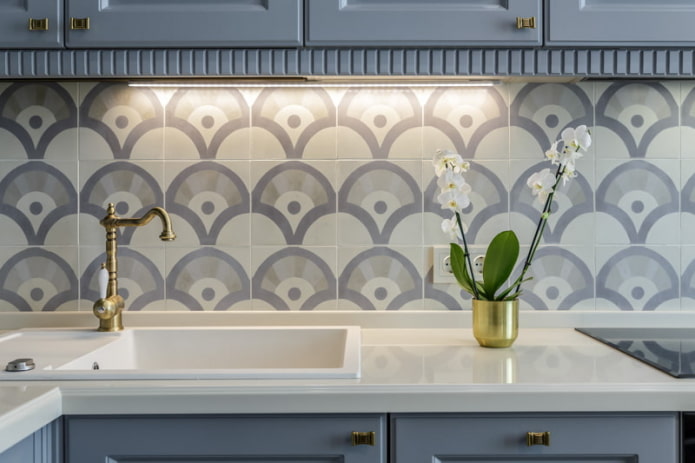
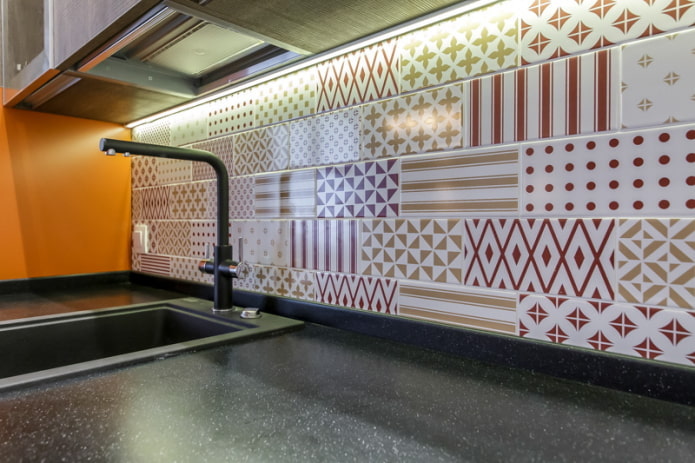
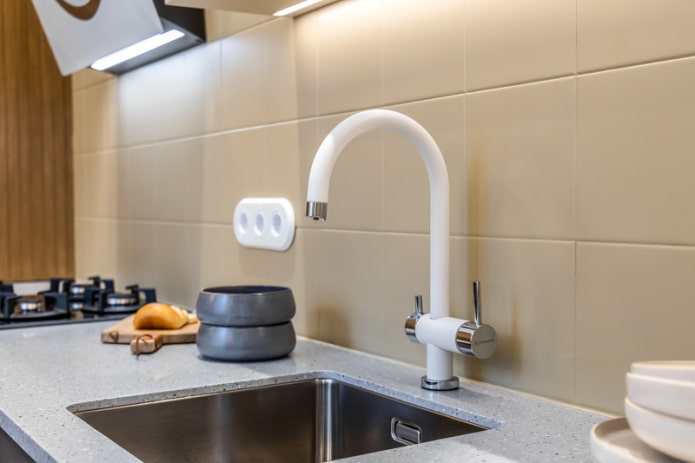
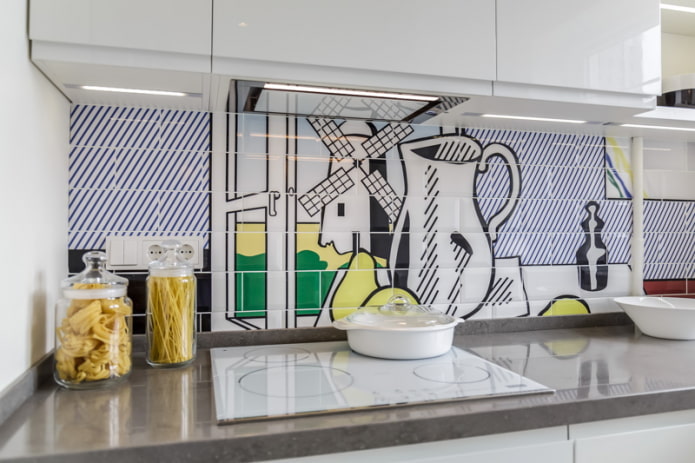
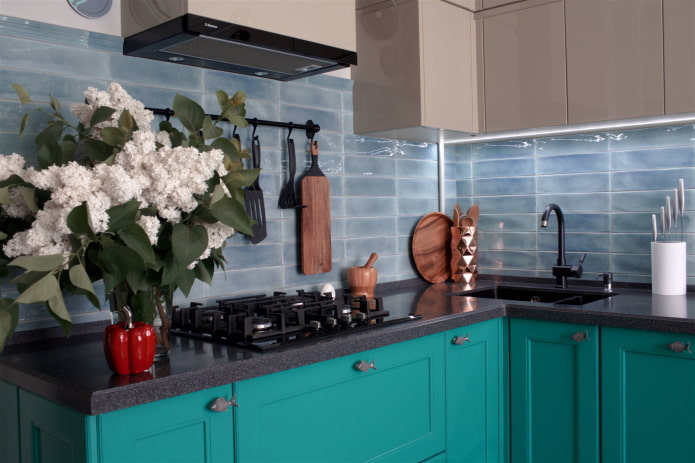
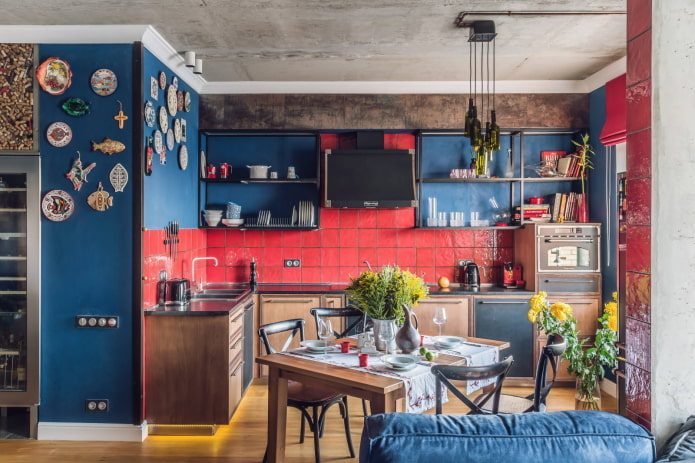
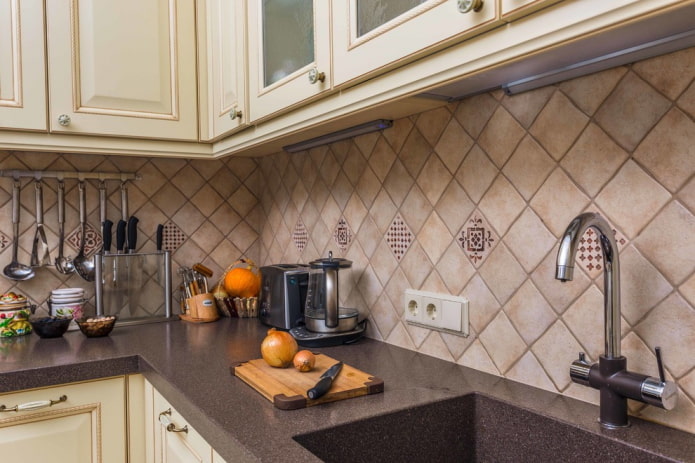
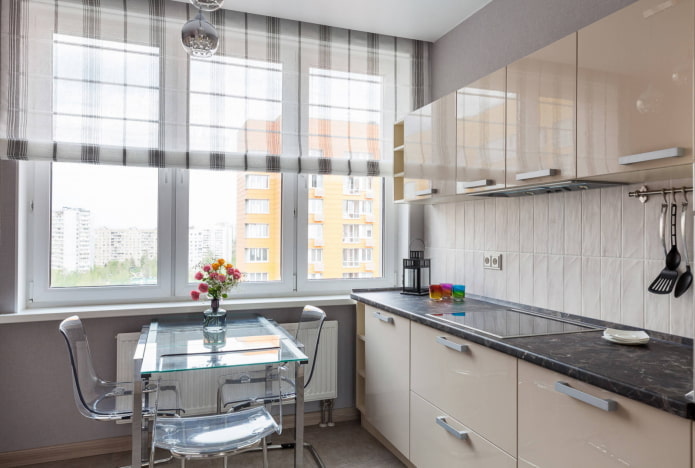
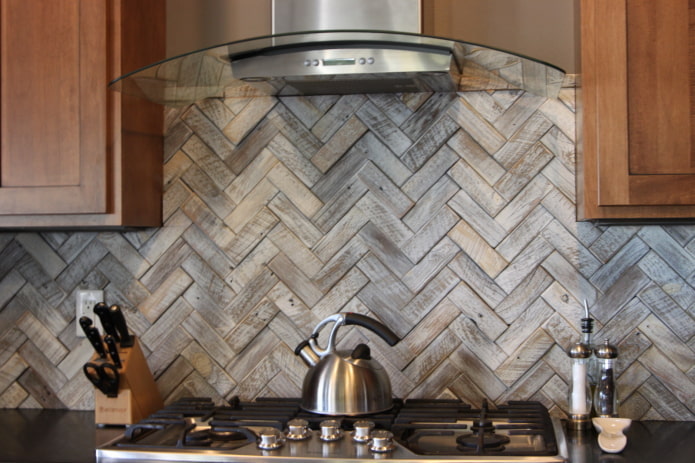

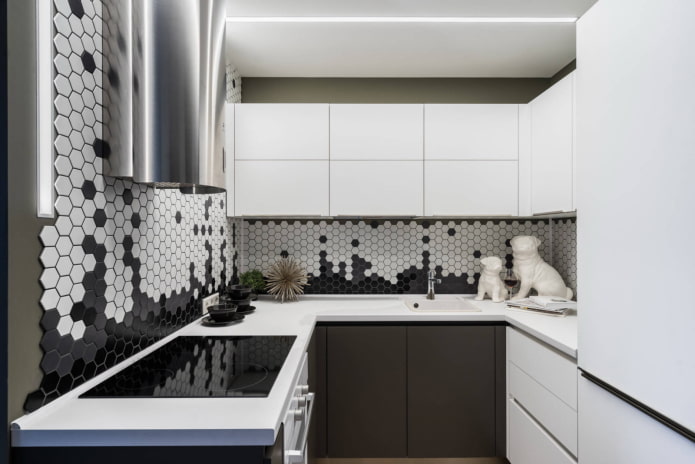
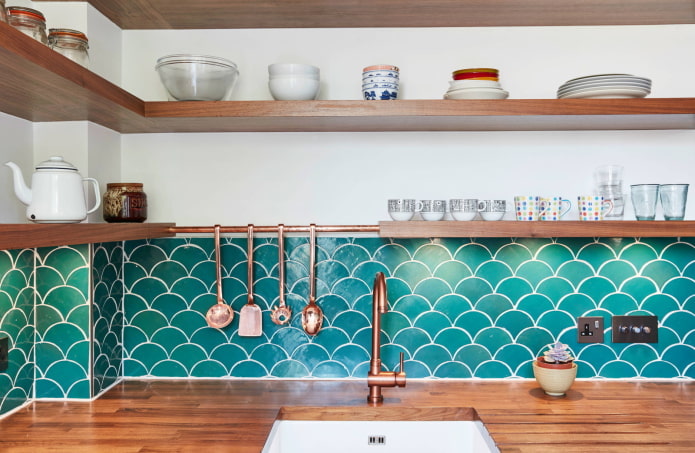
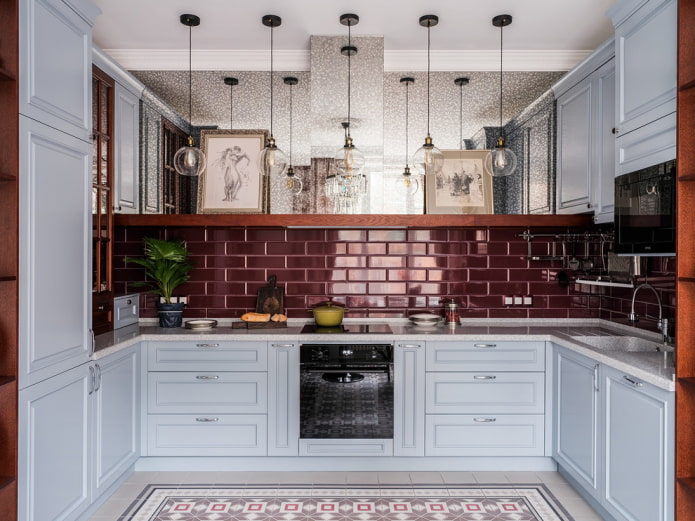
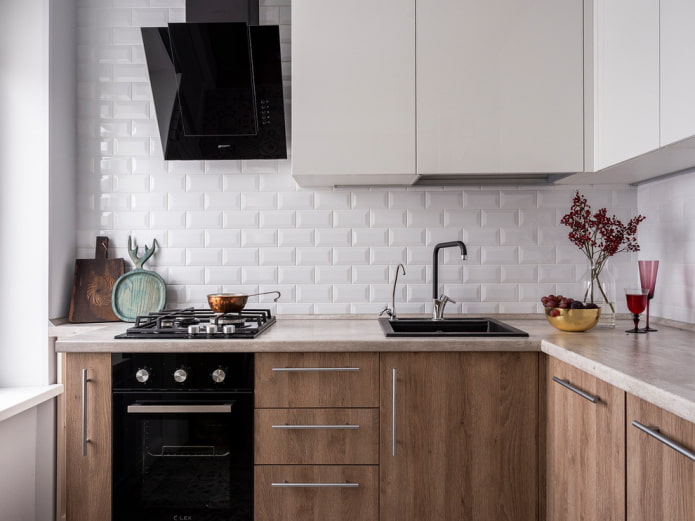

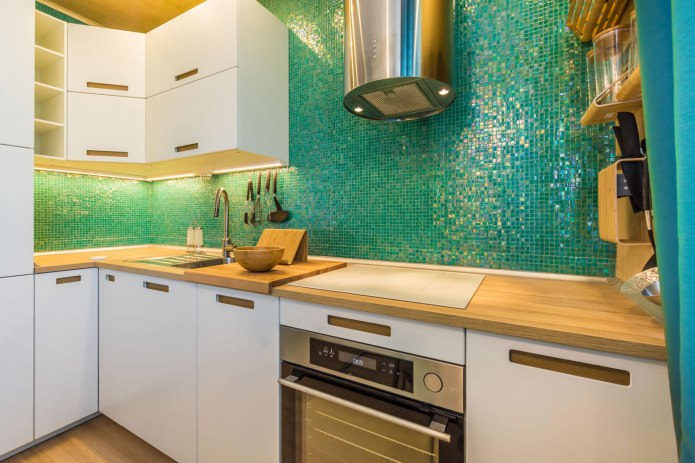
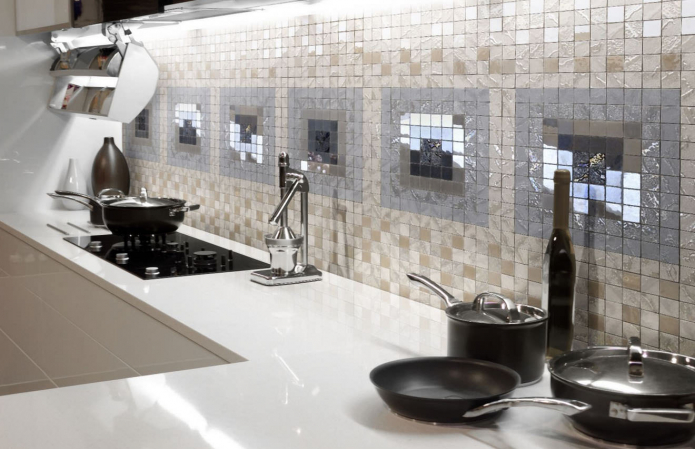
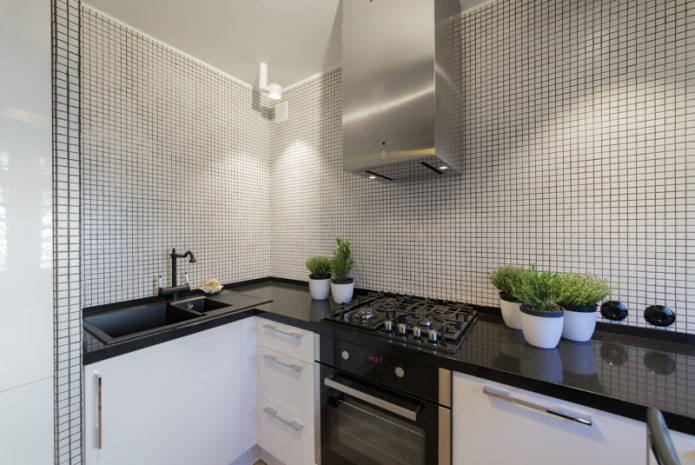
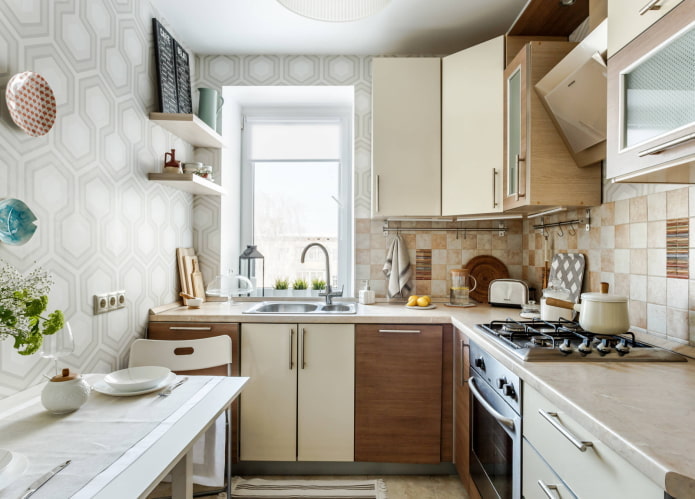
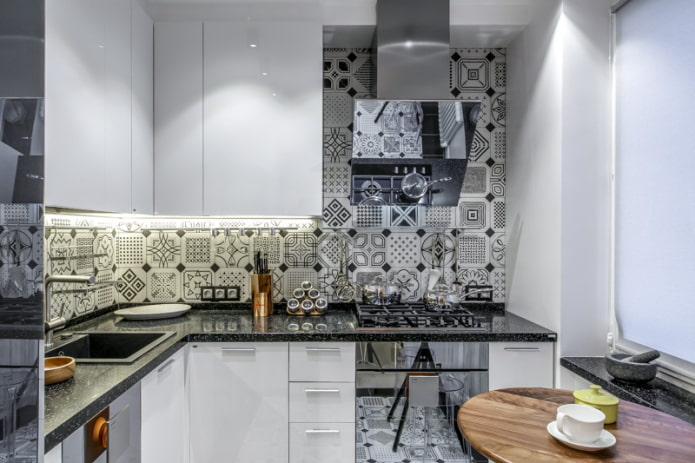

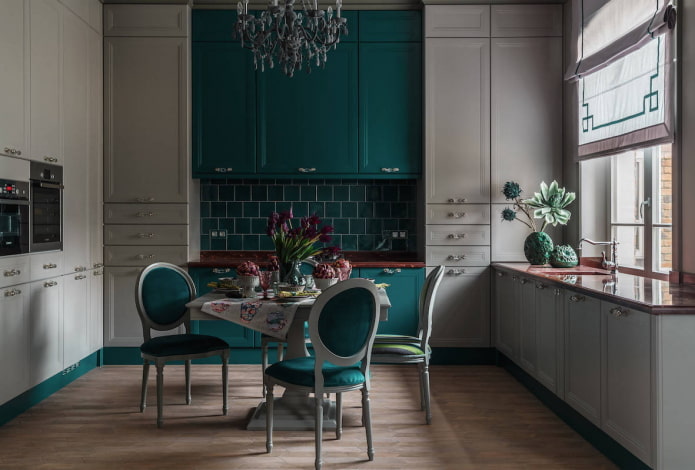
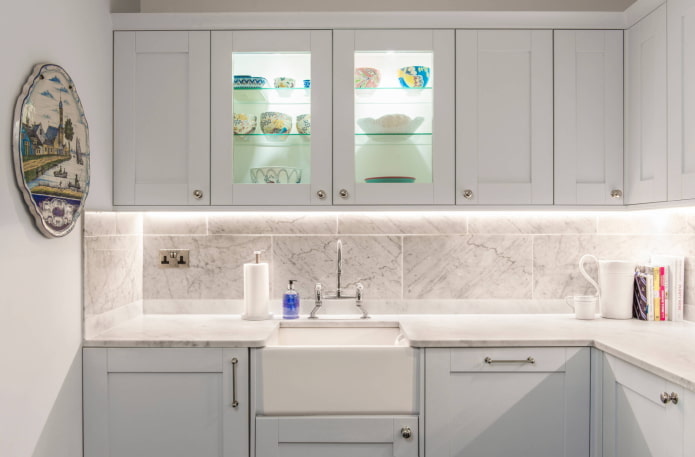

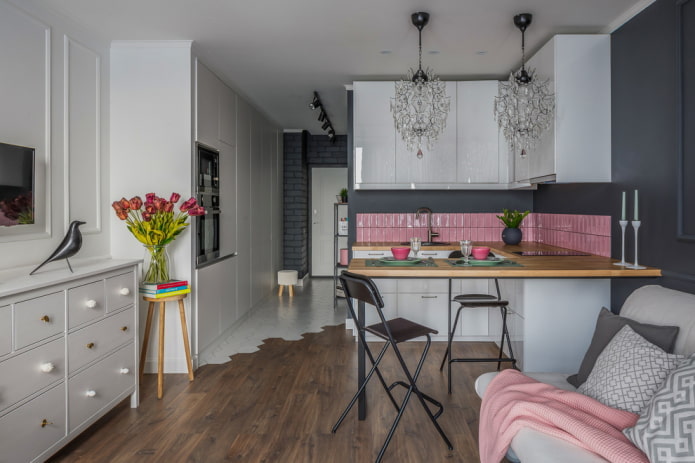
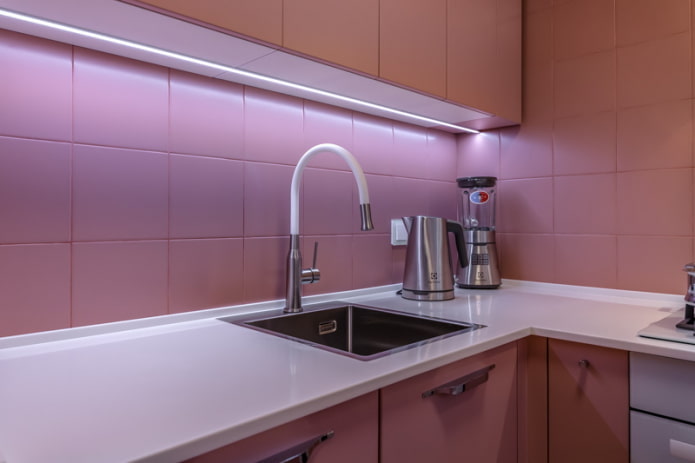

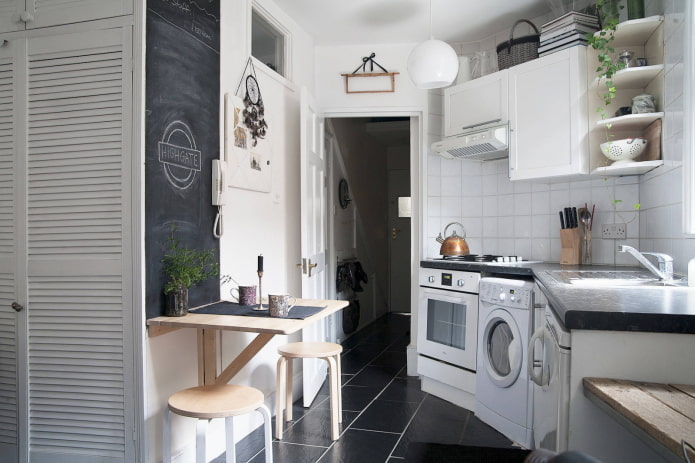

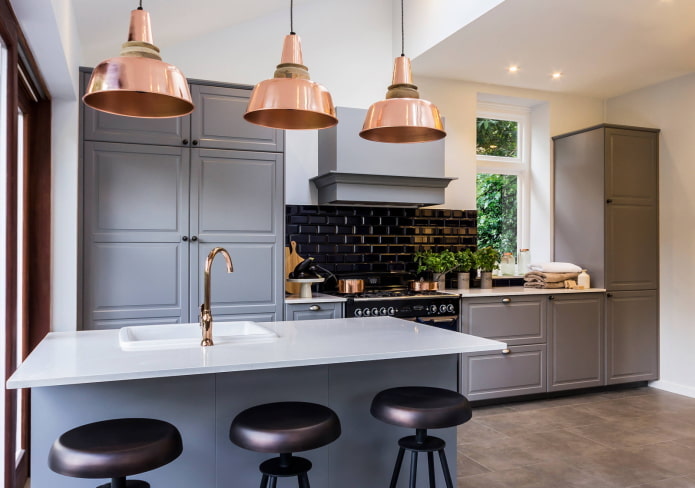
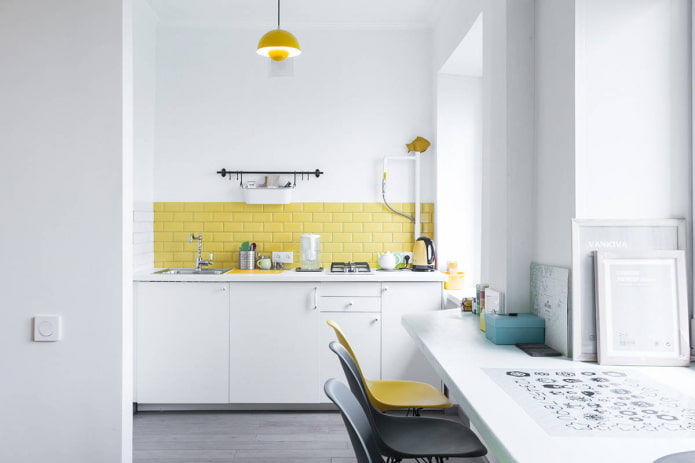
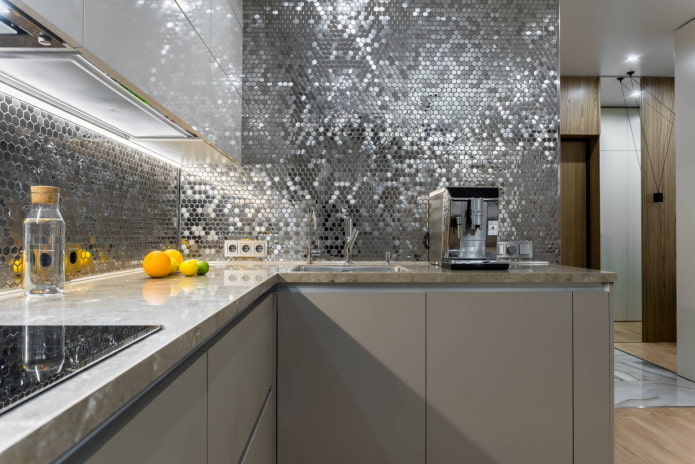
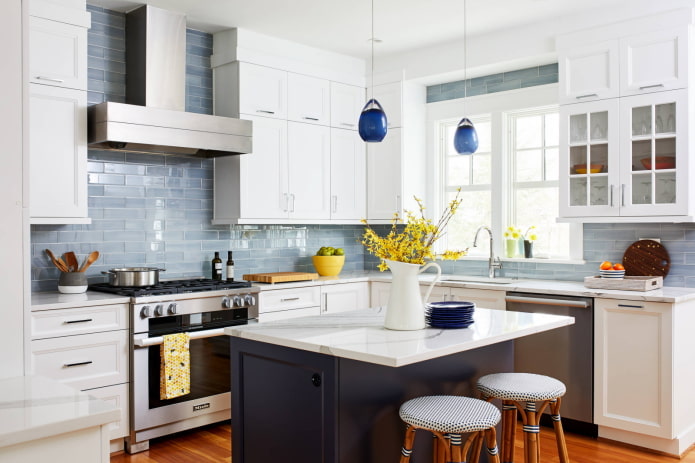
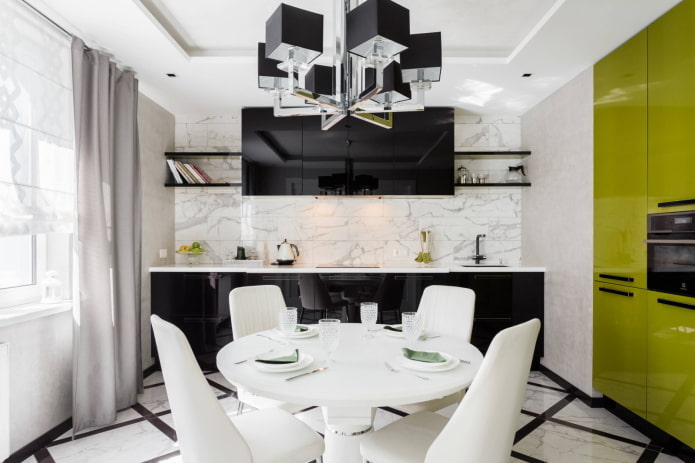
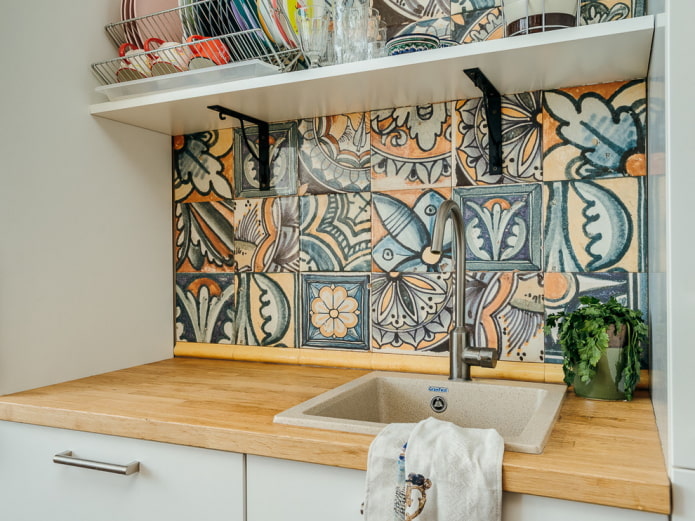
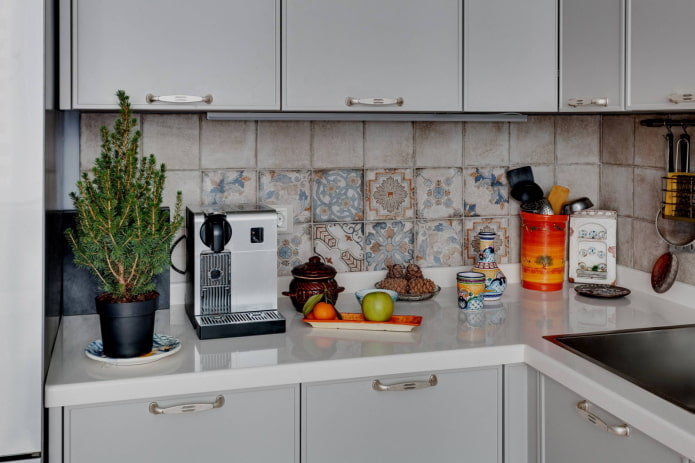
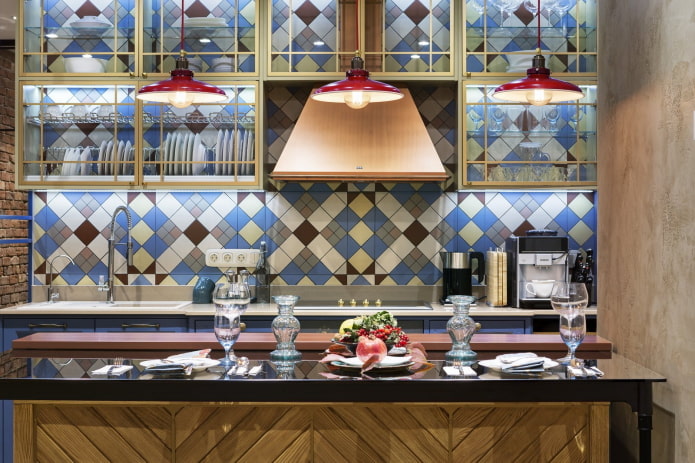

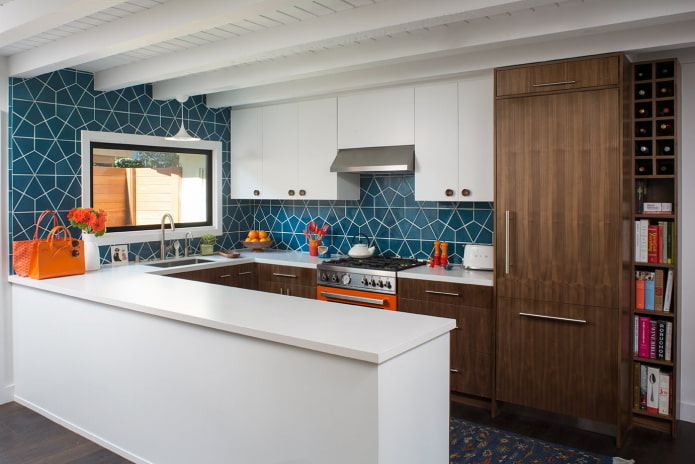
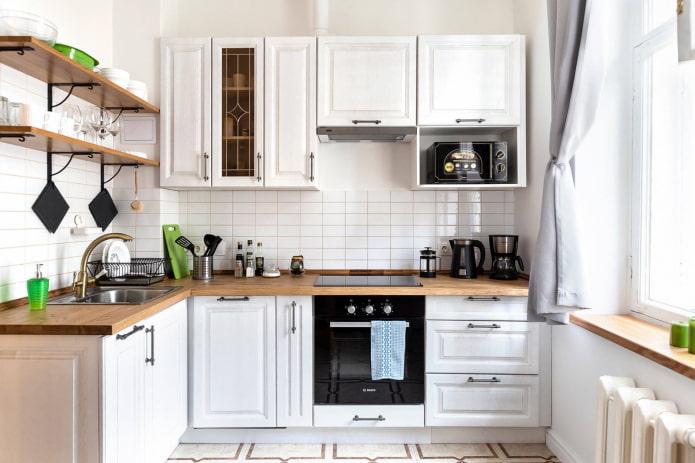
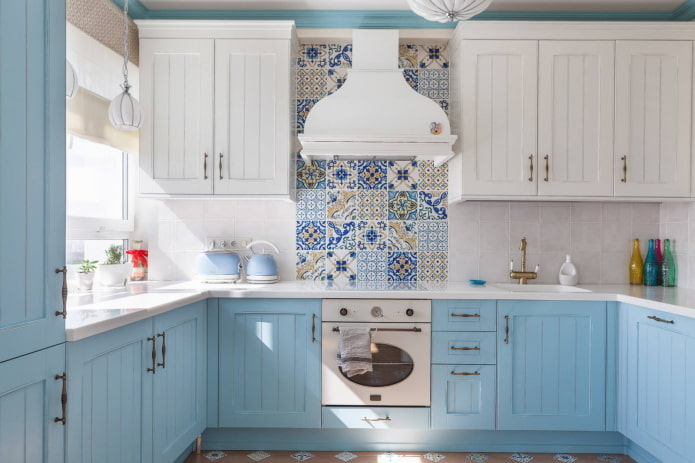
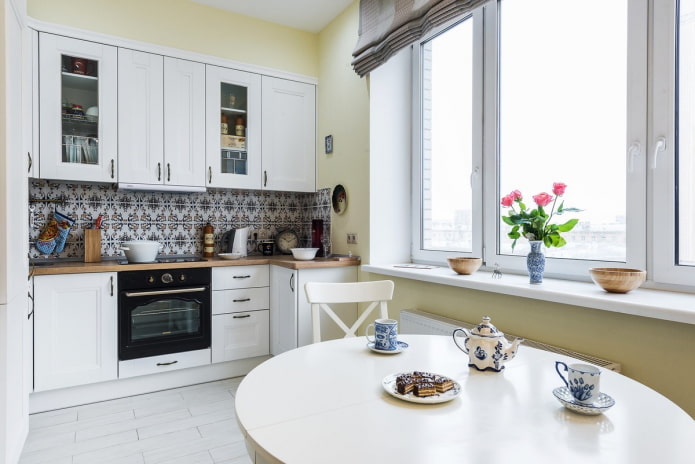
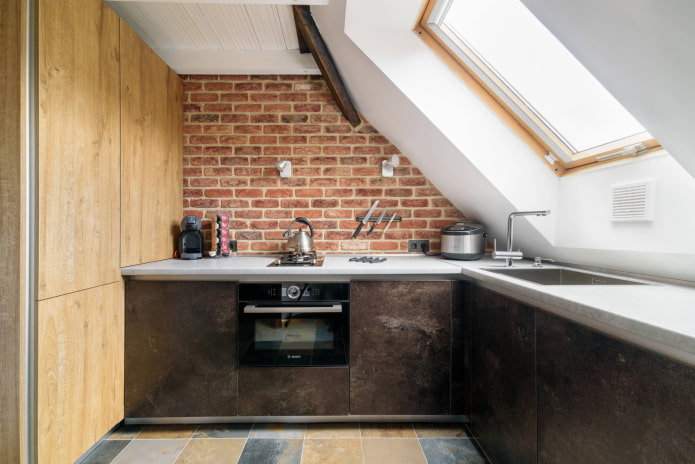
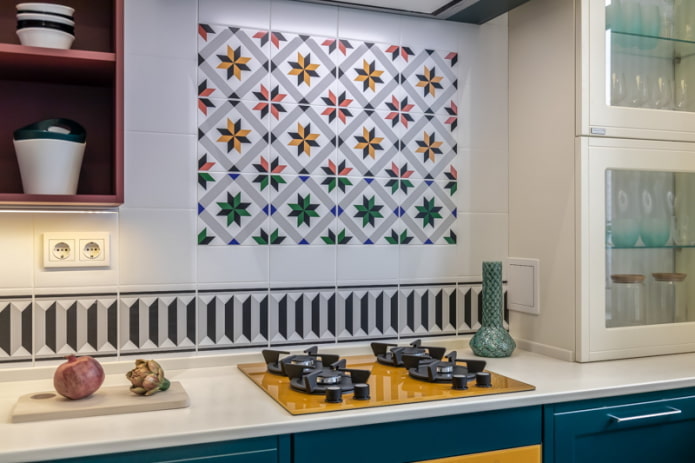

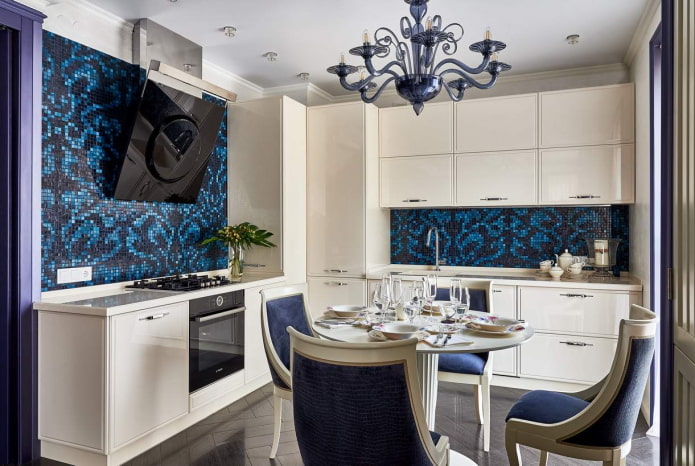

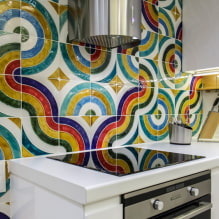
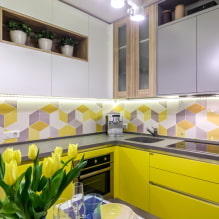

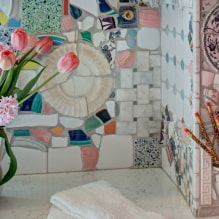
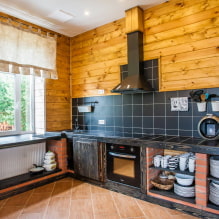
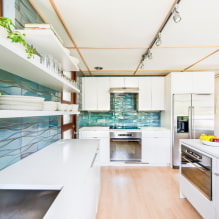
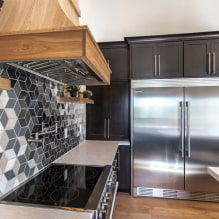


 How to choose the color of the sink for the kitchen?
How to choose the color of the sink for the kitchen? White kitchen: features of choice, combination, 70 photos in the interior
White kitchen: features of choice, combination, 70 photos in the interior Black suite in the interior of the kitchen: design, choice of wallpaper, 90 photos
Black suite in the interior of the kitchen: design, choice of wallpaper, 90 photos Modern design ideas for curtains for the kitchen - we make out the window stylish and practical
Modern design ideas for curtains for the kitchen - we make out the window stylish and practical Wallpaper design: 65 photos and ideas for a modern interior
Wallpaper design: 65 photos and ideas for a modern interior Design of a white kitchen with a black countertop: 80 best ideas, photos in the interior
Design of a white kitchen with a black countertop: 80 best ideas, photos in the interior